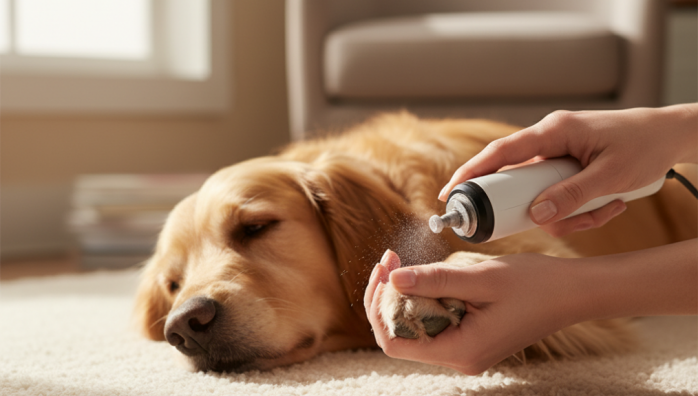Trimming Dog Nails Without Stress
by admin in Pet Care Basics 21 - Last Update November 19, 2025

I used to dread it. That soft but unmistakable \'click-clack\' of my dog\'s nails on our hardwood floors was a sound that sparked instant anxiety for both of us. It meant the dreaded nail-trimming battle was imminent. For years, it was a wrestling match that left my dog hiding and me feeling like the worst pet parent on the planet. I knew there had to be a better way, and after much trial, error, and patience, I finally found a stress-free approach that has completely changed our lives.
Why nail trimming is so stressful for dogs (and us)
Before finding a solution, I had to understand the problem. A dog\'s paws are incredibly sensitive, packed with nerve endings. For them, having their paws restrained and a strange tool applied can feel threatening. My early mistakes were trying to rush the process and do all four paws in one sitting. I was treating it like a chore to be finished, not an experience to be managed. This created a negative association that only got worse over time. The fear in my dog\'s eyes was a direct reflection of my own stressful energy and flawed technique.
My game-changing toolkit: what I use now
I simplified my tools. A complicated kit just adds to the chaos. Now, I only rely on two key items: a high-quality nail grinder and a bag of high-value treats (think tiny pieces of chicken or cheese, not their everyday kibble). The treats are non-negotiable; they are the cornerstone of creating a positive experience.
Clippers vs. grinders: my honest take
I started with guillotine-style clippers, and that\'s where I made my biggest mistake: I accidentally cut the quick. The yelp and the blood were traumatic for both of us. While some people are very skilled with clippers, I found a grinder to be a much safer option for my peace of mind. The grinder allows me to take off tiny layers of nail at a time, giving me more control and drastically reducing the risk of hitting that sensitive quick. The noise took some getting used to for my dog, but we worked through it with lots of praise and treats.
The step-by-step process I swear by
This isn\'t a 10-minute task anymore. It\'s a calm, patient routine spread out over time. This is the exact process that finally brought peace to our grooming sessions.
- Set the mood. I never chase my dog down. I wait until he\'s naturally calm and resting, perhaps snoozing on his favorite bed. I sit quietly beside him for a few minutes before even bringing out the tools.
- One paw, one nail, one second. In the beginning, my only goal was to touch the grinder (while it was off) to one nail for one second, and then immediately give a treat and praise. We did this for days until he was comfortable with the tool\'s presence.
- The \'one nail a day\' rule. My biggest breakthrough was abandoning the \'all-at-once\' mindset. Now, I often just trim one or two nails per day. It takes less than a minute. By the end of the week, all his nails are done, and neither of us has felt a moment of stress.
- Know your limits and respect the quick. With light-colored nails, you can see the pink quick. With dark nails, it\'s tougher. I go slowly and look for a small, dark circle to appear on the cut surface of the nail – that\'s my signal to stop. If you ever do hit the quick, stay calm, use styptic powder to stop the bleeding, and end the session with love. It\'s not the end of the world, but it\'s always best to be cautious. While this is what has worked for me, I always suggest you chat with your vet for a demonstration if you\'re unsure.
Final thoughts from my years of experience
Patience is everything. You are un-doing a learned fear, and that takes time. By shifting my perspective from a \'chore to be done\' to a \'trust-building exercise\', I transformed our most dreaded task into a quiet moment of bonding. It\'s not about achieving perfect nails in one session; it\'s about maintaining them consistently over time in a way that honors your dog\'s comfort and trust in you.













